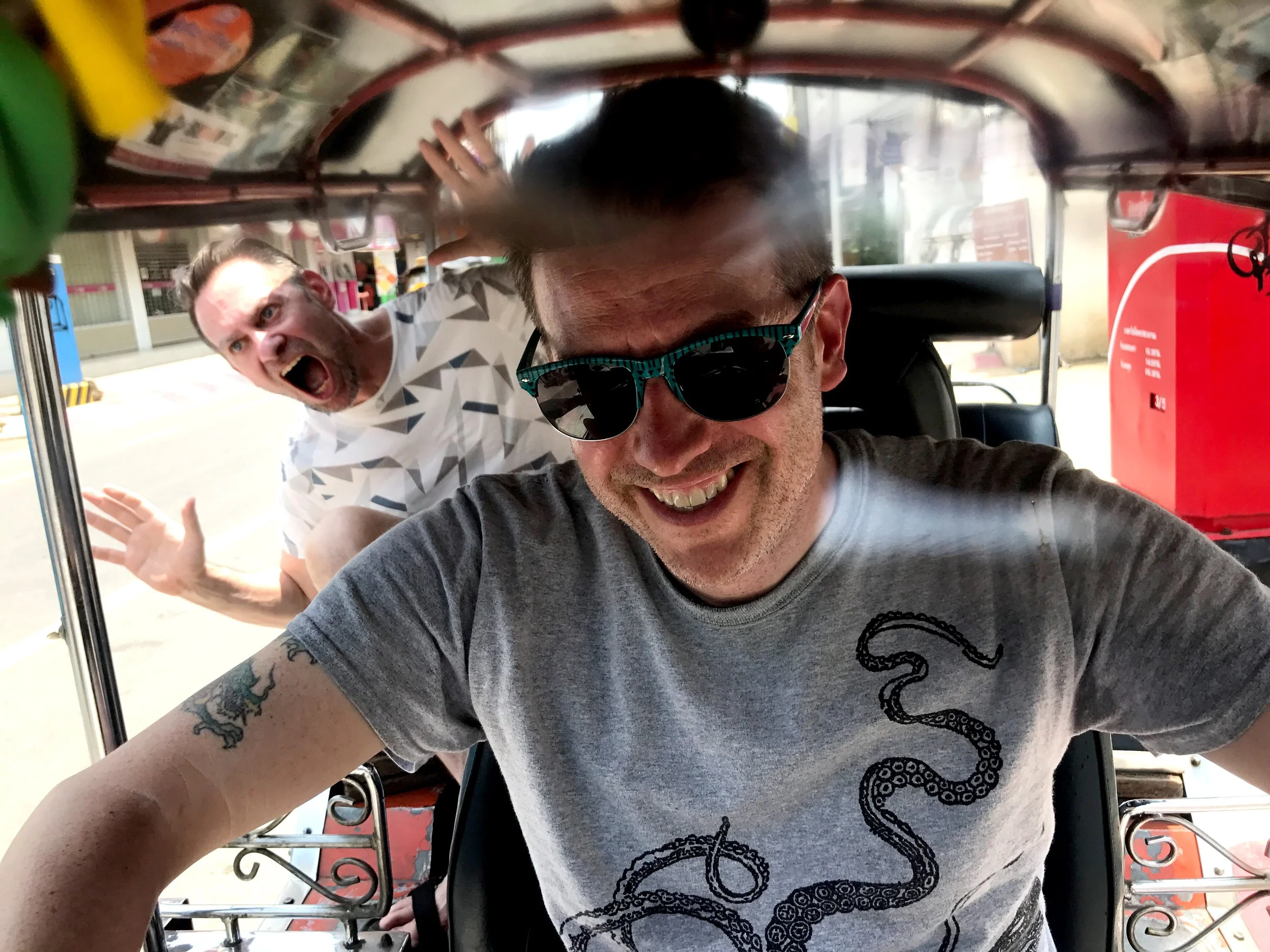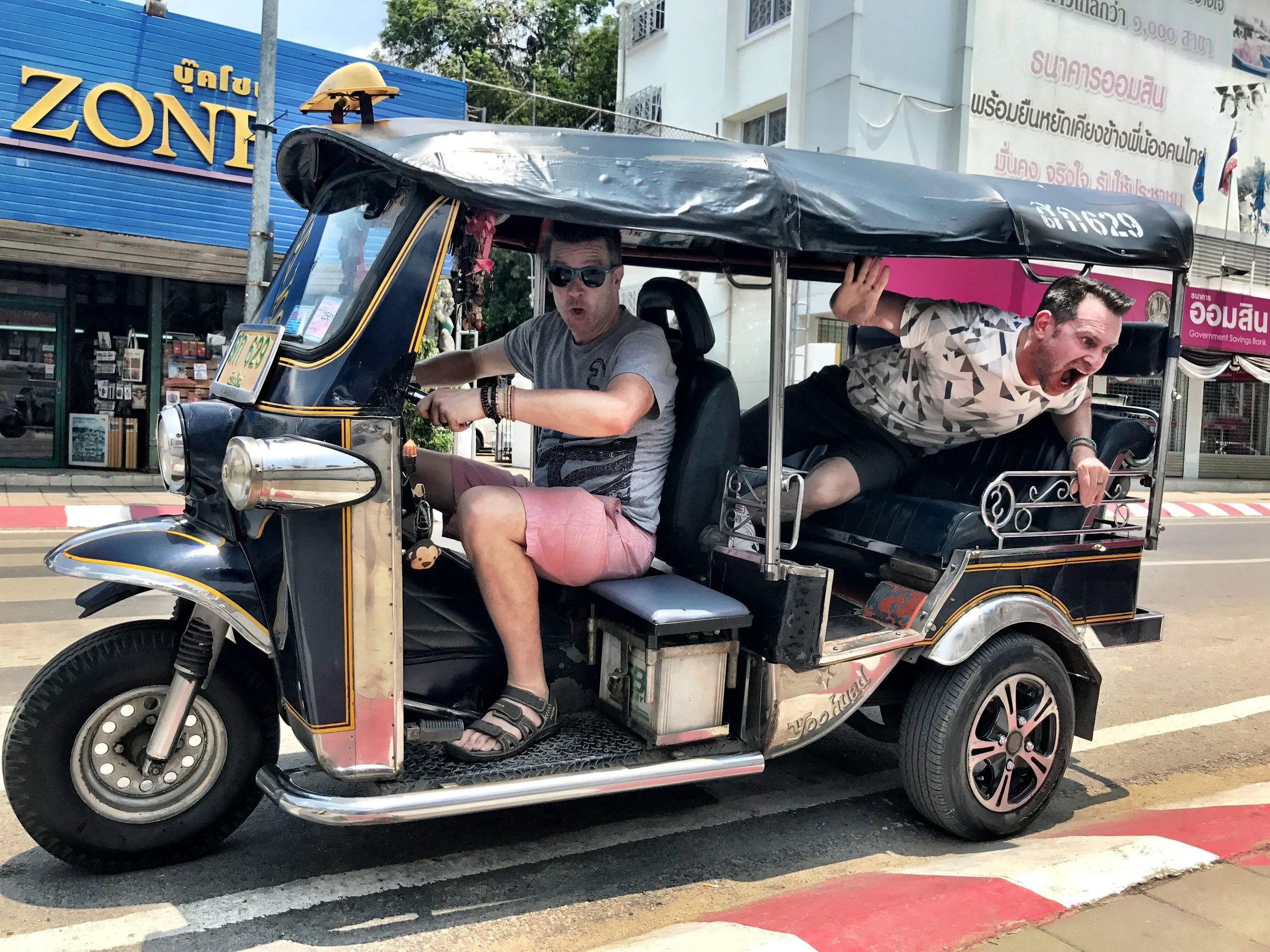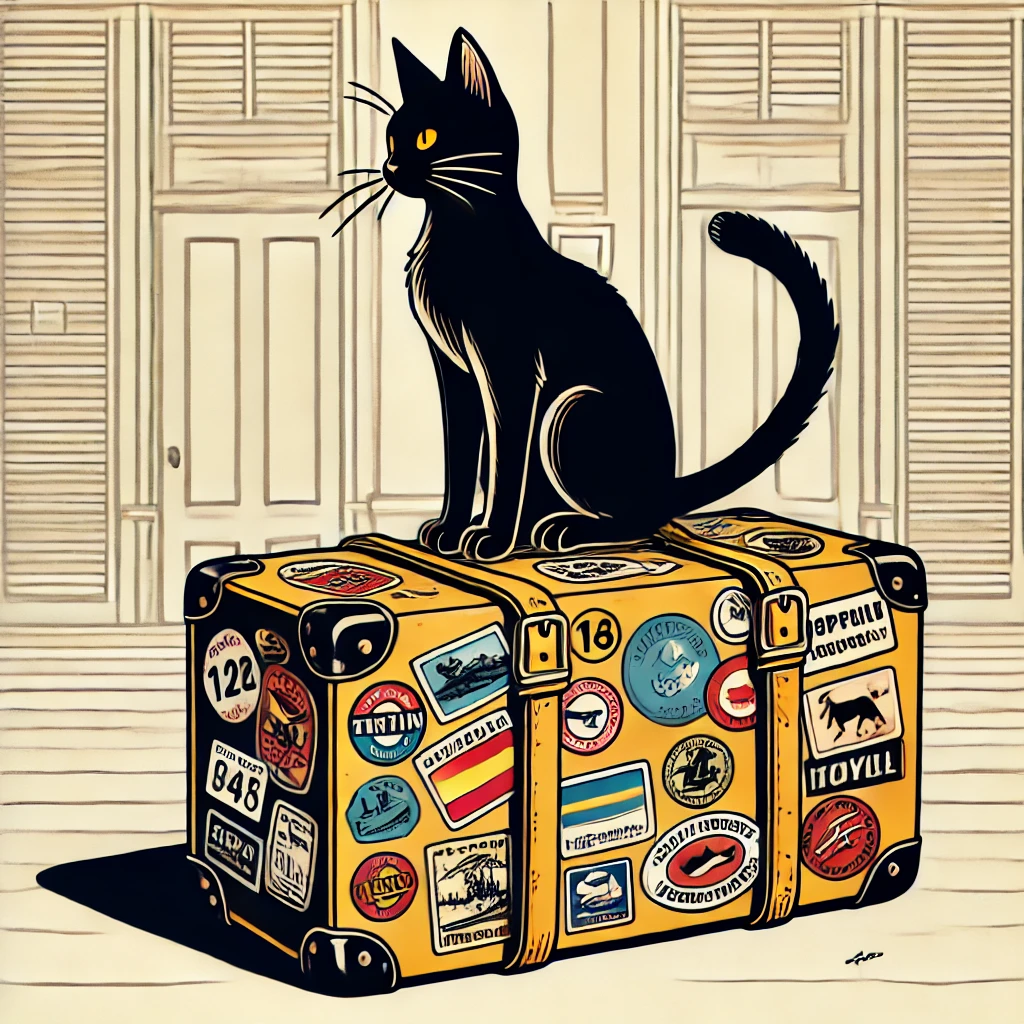What is a tuk-tuk taxi? And what do you need to know about this mode of Thai transportation so you don’t get taken for a ride?
The only good part of getting scammed is that we got some funny pics of Wally driving a tuk-tuk — much to Duke’s dismay
Most of the time during your stay in Chiang Mai, you’ll be traveling around in the cute contraptions with the adorable name: tuk-tuks. These three-wheeled vehicles are like teeny-tiny open-air motorbike chariots. The ones in Chiang Mai really only fit two passengers comfortably, though three could probably squeeze in.
If you’re in the Old City, or anywhere nearby, you should be able to flag one down and go anywhere you want for an affordable price. Here are nine tips to follow when hiring a tuk-tuk:
“He stopped outside the gate and kicked us to the curb. So much for good karma.
”
1. Negotiate your price before getting in the tuk-tuk.
You’re exhausted from walking all day. It can be tempting to hop into the tuk-tuk and then talk prices. Resist.
In Chiang Mai, you should be able to go short distances for 100 baht. Let the driver quote a price first. If it's less than 100, score! If it's not, and you’re traveling within or just outside the Old City, try insisting upon 100฿.
Walk away if they won't come down in price. They'll cave — most of the time. (We didn’t have much luck playing hardball during a crowded event, like the Saturday Walking Market, for instance.) But if they don't accept your price, you should be able to find another tuk-tuk right away.
2. Know exactly where you’re going.
You don’t have to know the route — just the address of your destination. Most addresses in Chiang Mai will be four or five lines long and seem to include streets, districts, subdistricts and even the nearest gate in the ancient walled city.
Have your destination address ready to go on your phone to show the driver.
3. BYOM: Bring your own map.
Some drivers have their own maps, but play it safe and bring your own. It's easier to point on a map than to show English addresses. So just whip out your copy of Nancy Chandler’s map of Chiang Mai (it seems as if everyone’s got one). Before you head somewhere, try to find where you are currently and where you’d like to go.
A couple of fellow travelers told us about a great resource: the app Maps.me, where you can download a comprehensive map of the city that you can access offline.
Drivers like to orient themselves by gates. Look at the closest one to your destination and point to it on the map.
4. They treat two lanes like three.
This can be a bit nerve-racking if you focus on it too much. Granted, tuk-tuks are pretty small and two of them can almost fit abreast in a lane of traffic. But they weave in and out of traffic — some of it oncoming — so the best thing to do is just put your trust in your driver and try to enjoy the ride. And hang on tight.
5. They lay off the horn.
It's the polar opposite of India, where drivers never stop honking. Perhaps it's their quiet Buddhist nature. But I sure ain’t complaining.
6. Watch for the fake-out tuk-tuks.
When you really just want to find some nice open-air transport back to your hotel, standing on the side of the road in the blazing heat, you’ll inevitably get your hopes dashed by vehicles that look a lot like tuk-tuks but aren’t. They have a motorbike with a sidecar sort of thing, usually used to carry food.
7. When desperate, flag down a red taxi (song thaew).
If you go to a more remote locale (like the mostly abandoned JJ home décor market Duke wanted to try out), you might not find a tuk-tuk. In these instances, you’ll have to flag down a song thaew (literally “two rows), so named for the seating in the back of these modified trucks. They’re covered and can get quite hot inside.
You'll have to share these with other riders most of the time, and they make various stops as they go along. It’s best to know what your destination looks like, since it’s not as easy to converse with the driver as it is in a tuk-tuk.
The good thing is that these are quite cheap. It says all rides are 30฿ on the side of the vehicle — but we always paid a bit more and didn’t argue.
8. If you want to go farther afield, hire a driver for the day or half-day.
We had a fantastic experience with Tommy (you can email him at t.tommy2556@gmail.com). His price was competitive — in fact, I think the drivers must all decide on a price, and everyone sticks to it. Tommy speaks fluent English and has a penchant for love songs from the ’70s. We enjoyed his company so much, we hired him three of the days we spent in Chiang Mai.
9. Avoid this tuk-tuk scam.
Yes, Duke and I still manage to get swindled now and then.
On our first day in Chiang Mai, we saw a tuk-tuk driver at the first temple we visited, then again later in the day. He offered to take us on a tour of the Old City as well as a handicraft market for 150฿. He told us his name is Chi, the first three letters of our hometown Chicago, so I felt it must be kismet. You pronounce his name “Shy,” though he's anything but.
Our “tour” turned out to be a total crock. Chi took us to tourist trap shops outside the Old City, where everything is overpriced and the desperate salespeople cling to you. We cruised through them, though, in solidarity to Chi, after he explained that he gets a stamp from each place (and one imagines some sort of commission).
After five of those shops, Chi said he'll take us to the Old City. Instead, he stopped outside Tha Phae Gate and essentially kicked us to the curb, waving across the street and dismissing us. So much for good karma.
If you see Chi (heck, he might even have a picture of me and Duke to help lure you in), don’t fall for his scam. –Wally































